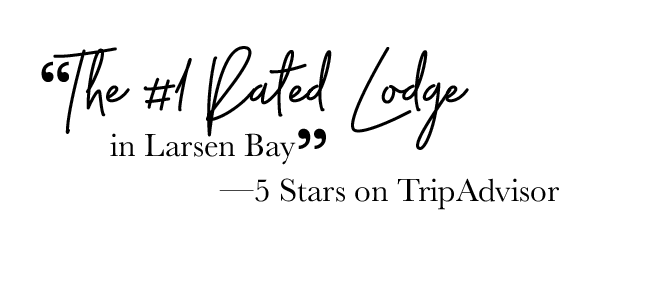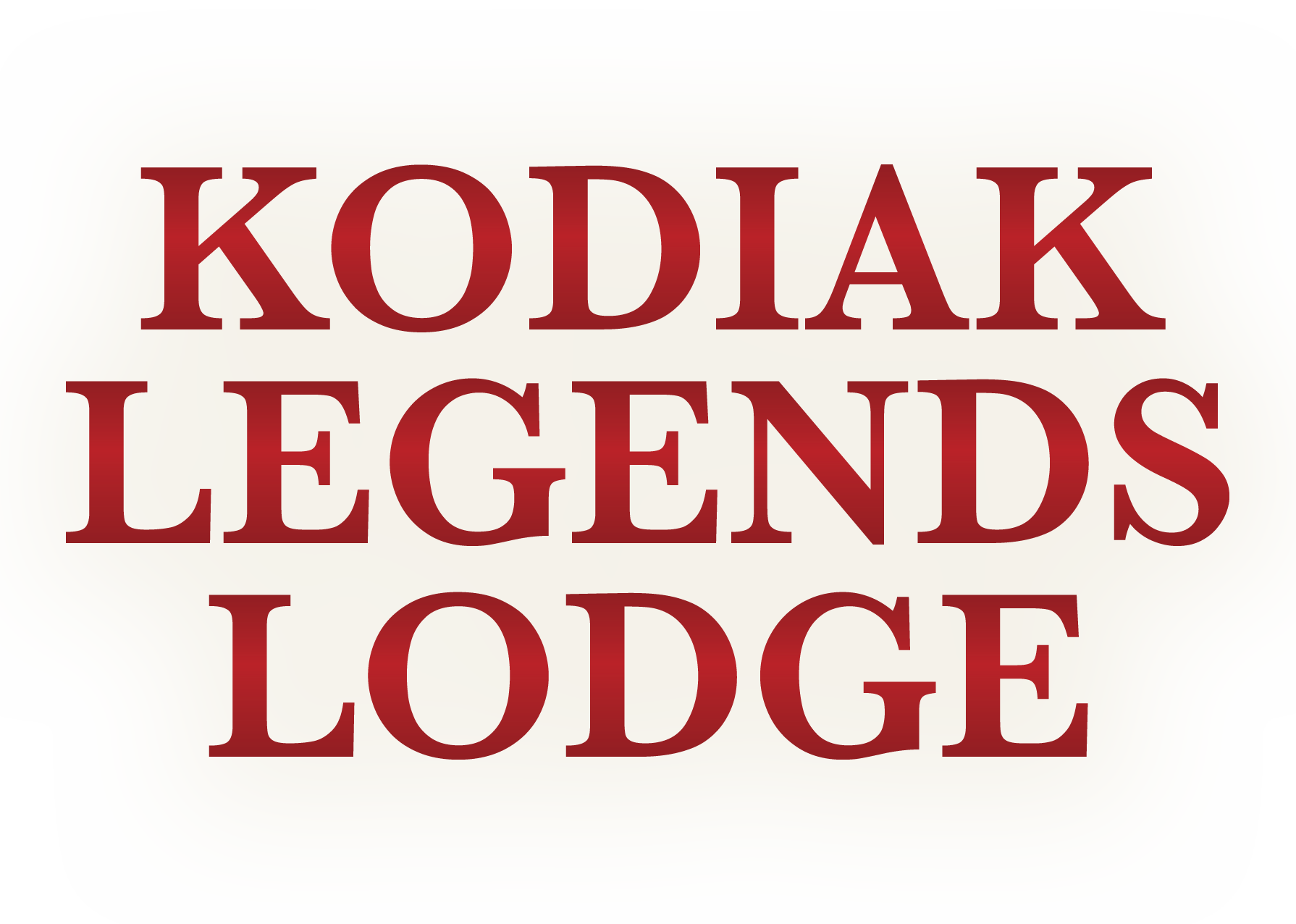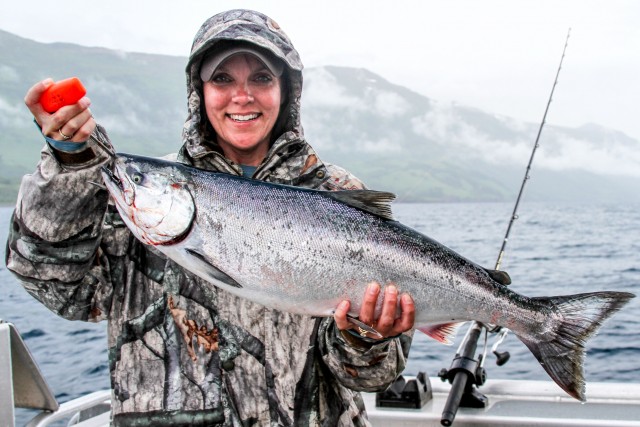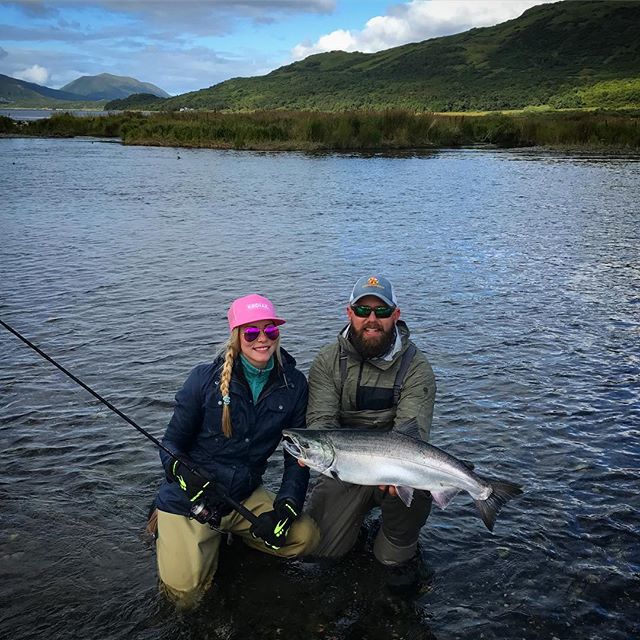KODIAK FISHING FAQ’s
Find all your Kodiak fishing questions answered here! We are always here to help with any additional needs you may have and will certainly do whatever it takes to ensure your trip is a successful one. Don’t hesitate to reach out if you find you still have questions or concerns.
Twenty thousand years ago most of the 5,000 square mile Kodiak Archipelago was covered by glaciers that scored and carved the landscape. Jagged peaks, fjord-like bays, and wide U-shaped valleys were left by the glacial retreat. Nature’s handiwork created a place of spectacular scenic beauty and a wilderness ideally suited for abundant land and marine life. At times the elements and the environment can be harsh and unrelenting, but for those who love Kodiak, it is simply a reminder that nature is in charge; lives and livelihoods must adapt. The reward is a unique lifestyle in an island paradise.
Kodiak has rich history dating back 7,500 years, when the island was first settled by the Alutiiq, a coastal people that subsisted off the island’s plentiful salmon, halibut, and whale. The Alutiiq people thrived on Kodiak until the mid-1700s, when Russian merchants and fur traders arrived in search for valuable sea-otter pelts and new fishing grounds. After seeing Kodiak’s rich natural resources, the Russians named it the capital of their Russian Colony in Kodiak Alaska. Large- scale commercial fishing operations began in 1882, when the first salmon cannery was built on the Karluk River to process the legendary sockeye runs.
After the Russians sold Alaska to the U.S. in 1867, many Americans migrated to Kodiak to continue commercial fishing operations, primarily for salmon. Starting in the 1950’s, large scale king crab fishing began to flourish, eventually making the island the “king crab capital of the world.”
Kodiak is actually the 2nd largest island in the United States and has a total population of roughly 14,000 people. It is approximately the size of Connecticut.
Alaska Time Zone is 4 hours behind Eastern. For example: 12:00 noon Eastern Time = 8:00 am in Alaska
Summer daytime temperatures in Kodiak can range from the mid 40’s to the high 70’s, with the mid 50’s through low 60’s being typical. The weather is unpredictable and can reach either extreme during the season. Be prepared for everything from cool, windy and rainy to warm, calm and sunny. Dressing in layers is highly recommended. There is a good chance precipitation will occur at some point during your trip so it’s a good idea to bring at least a rain jacket. Generally, June and July are warmer and drier than August and September.
State of Alaska fishing licenses and king salmon stamp can be purchased online and printed before your arrival. Some of our guests purchase them in Anchorage or Kodiak on their way to the lodge but the easiest is to purchase before online.
- Go to: http://www.admin.adfg.state.ak.us/license/ and order your license
- All guests should get a 3-day or 7-day fishing license depending on the length of stay, beginning the date of their first activity day. Guests looking to catch king salmon in June and July should also purchase a king stamp.
Larsen Bay is serviced from Kodiak City by the local airline, Island Air Service (800) 478-6196, www.flyadq.com, which has three scheduled flights daily to Larsen Bay from Kodiak (summer schedule) at 8 a.m., 1 p.m. and 6 p.m., except Sundays were they have only one flight at 1 p.m. On arrival days you will want to catch the 6 p.m. flight to Larsen Bay unless you arrive on Sunday, then you would catch the 1 p.m. On departure mornings, you will book the 8:35 a.m. from Larsen Bay to Kodiak. This is the first flight of the morning to get you back into Kodiak at around 9:15 a.m. Please give yourself at least an hour and thirty minutes in Kodiak to catch your flight to Anchorage as they have a strict policy about checking in at least one hour in advance. If you need to catch an earlier flight to Anchorage, you need to fly into Kodiak the night before.
Larsen Bay is considered a damp village. What that means is alcohol is allowed to be consumed in the village but it is not allowed to be sold or, in the case of the lodge, given away. With that said, our clients usually do one of two things. The first is they bring their own from home. The second, and most recommended, option is purchasing what you want for your stay at the lodge in the city of Kodiak. Island Air, the air service that will bring you out to Larsen Bay has a free van service to town and one of the most popular stops is the liquor store. As long as you arrive in Kodiak at least an hour or two prior to your departure to the lodge they will run you in to town for a quick purchase.
The lodge does have WiFi service but it it’s very limited. Our WiFi service is provided by satellite so it’s slow and limited to how much data we are allowed each day. To put that in perspective, the 400 mb of data that we are allowed per 24 hrs is about the same as downloading 4 apps for your phone. That said, checking emails is no problem as well as text messaging over the internet. We do ask that you hold off on downloading pictures and skip the video chats. No major cell carriers work in this part of remote Alaska. We do have a land line at the lodge that you can access with a calling card to check-in with your loved ones.
Your harvested fish will be cleaned, vacuum packaged, and frozen. An airline-approved shipping container with insulator liner is provided at no charge and will keep your product in good condition during return travel.
The mountainous terrain and coastal areas can bring about rapid changes in local weather systems. Often, weather conditions at the lodge or at your activity location are totally different than the weather in an area only a few miles away. For the safety of our guests and staff, all daily fly-outs are conducted at your pilot’s discretion and are weather permitting. Kodiak Legends Lodge accepts no responsibility for delays or cancellations caused by weather, mechanical discrepancies, natural disasters (flood, earthquakes, fire, etc.), or any other circumstances.
For those who choose to leave a gratuity, here is a suggested guideline. The gratuity pool is shared exclusively amongst lodge employees including the chef, captains, deckhands and house staff. Good equals a 10% gratuity. Great means upping it to 15%. If you had the trip of a lifetime the industry suggests 20%.
- Quality Rain Gear (jacket and pants—Gore-Tex works best)
- Lightweight, thermal underwear tops
- Lightweight, thermal underwear bottoms
- Two or three pair of heavy thermal socks
- Gloves (neoprene are great when you are on the boat)
- Warm knit or windproof cap and/or waterproof hat
- Two fleece shirts or sweaters
- Waterproof shoes or boots (to wear while fishing or hiking)
- Comfortable fitting pants for outdoor use
- Pair of fleece pants or long underwear to wear under waders (if freshwater fishing)
- Medium-weight fleece pullover or fleece-insulated cardigan jacket
- Slippers or moccasins for around the lodge (outdoor shoes/boots must be left off inside)
- Casual clothing for dinner
- Polarized sunglasses (brown or amber lenses work best)
- Lanyard for sunglasses—a critical accessory to avoid losing them
- Camera and film/memory cards
- Insect head net (for hiking)
- Non-allergenic insect repellent (if you are sensitive to repellents)
- Sunscreen and lip balm
- Toothbrush and toothpaste
- Personal medications (prescription & non-prescription i.e. aspirin, Rolaids, etc.), elastic back or knee braces, etc.

If you still have specific questions, contact us or request information about our fishing vacation packages.
@KodiakLegendsLodge



